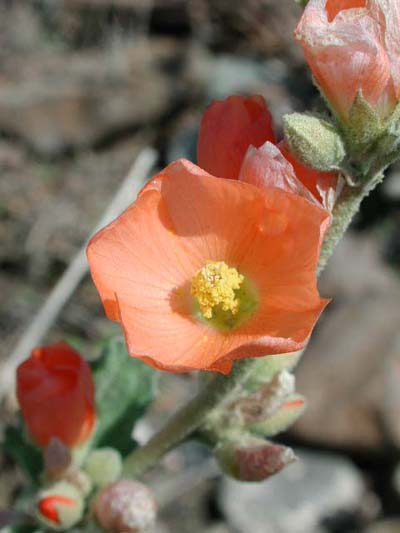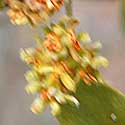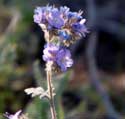Birds
In general order of abundance:
-
Gambel's Quail -- Callipepla gambelii - S,F,W,Sp
The after-burn habitat seems to be very favorable to these birds.
-
White-crowned Sparrow -- Zonotrichia leucophrys F,W,Sp
common to abundant winter birds with conspicuous white-striped head.
-
Verdin
-- Auriparus flaviceps - S,F,W,Sp
Tiny birds, barely larger than a hummingbird. Drab gray brown with a majestic
yellow head.
-
Rock
Wren -- Salpinctes obsoletus - S,F,W,Sp
Very common little birds which frequently give spirited high pitched trills
while perched atop prominants. Their drab gray and brown color blends perfectly
with the desert colors.
-
Mourning Dove -- Zenaida macroura - S,F,W,Sp
-
House
Finch -- Carpodacus mexicanus - S,F,W,Sp
-
Gila Woodpecker -- Melanerpes uropygialis - S,F,W,Sp
-
White-winged Dove -- Zenaida asiatica - S
-
Black-tailed Gnatcatcher -- Polioptila melanura - S,F,W,Sp
-
Phainopepla - S,F,W,Sp
-
Gilded Flicker -
S,F,W,Sp
-
Canyon Towhee -- Pipilo fuscus - S,F,W,Sp
-
Curve-billed Thrasher -- Toxostoma curvirostre - S,F,W,Sp
-
Costa's Hummingbird -- Calypte costae - Sp,S
-
Common Raven -- Corvus corax - W,Sp
Conspicuous, large, jet black birds that soar above looking for food.
-
House Sparrow -- Passer domesticus -- S,F,W,Sp
-
Black-throated
Sparrow - S,F,W,Sp
-
Cactus Wren -- Campylorhynchus brunneicapillus - S,F,W,Sp
-
Northern Cardinal -- Cardinalis cardinalis - S,F,W,Sp
-
Say's Phoebe -- Sayornis saya- S,F,W,Sp
-
Brewer's
Sparrow - W,Sp
-
Violet-green Swallow- Sp
-
American Kestrel -- Falco sparverius S,F,W,Sp
-
Cooper's Hawk -- Accipiter cooperii F,W,Sp
 Say's Phoebe
|
Black-throated Sparrows have distinctive facial markings.


|
































